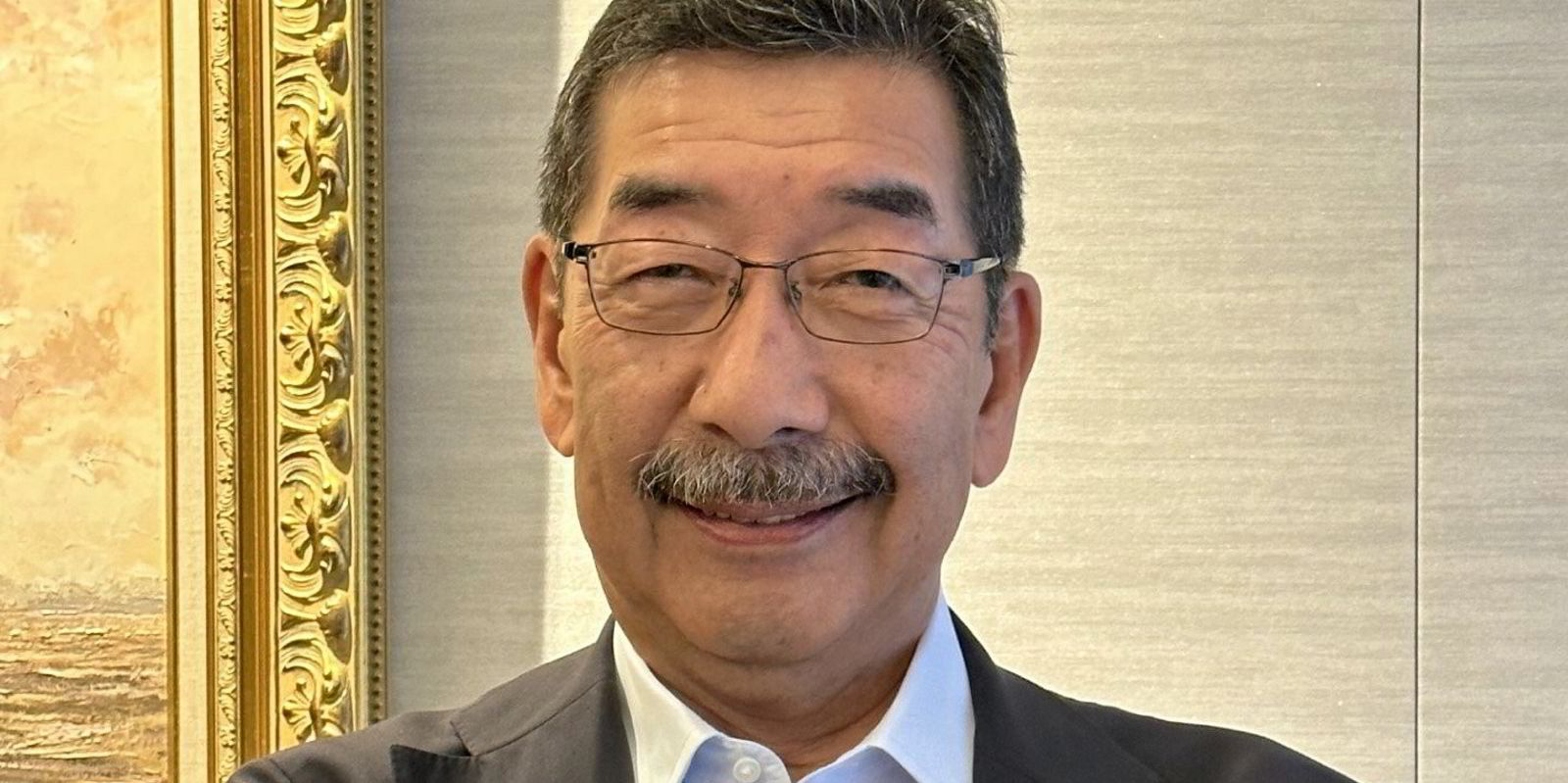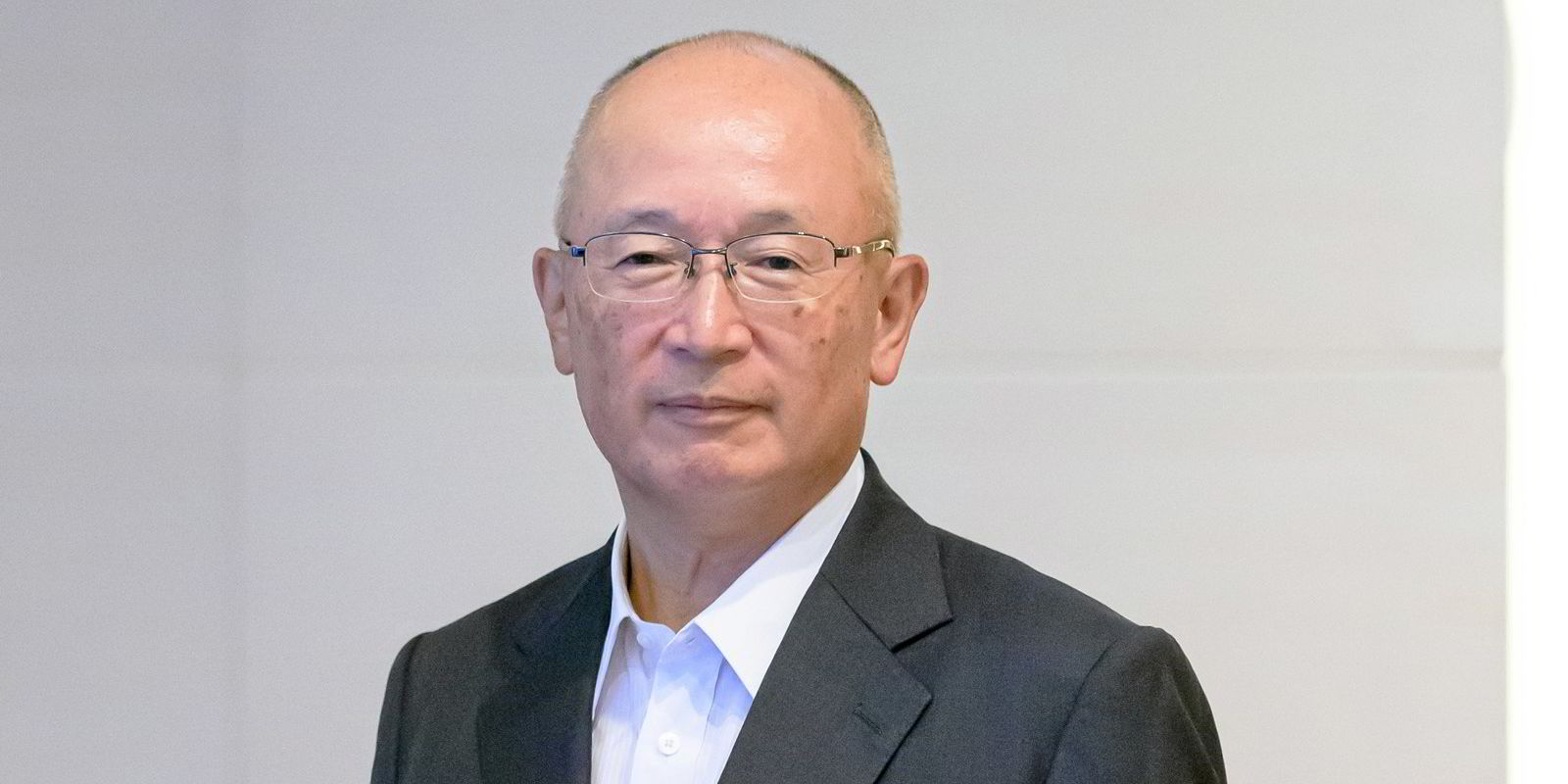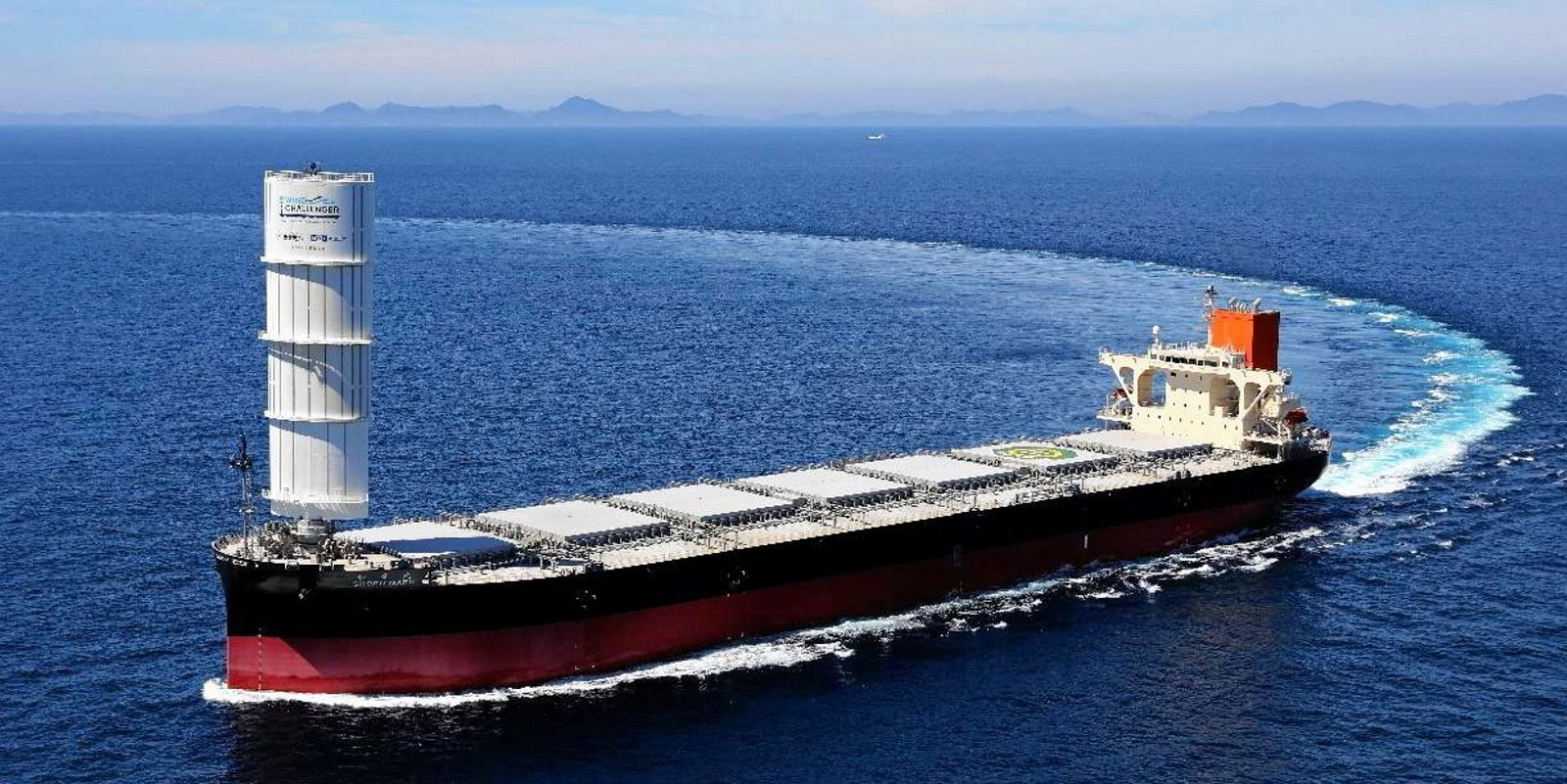MOL Drybulk is turning to energy-saving technology and biofuels as part of the road to decarbonising its fleet.
The subsidiary of Mitsui OSK Lines (MOL) controls vessel types ranging between 10,000-dwt and 100,000-dwt bulk carriers, woodchip carriers and multi-purpose vessels.
It plans to install rotor sails and MOL’s Wind Challenger sails on conventional fuelled bulkers it will be ordering.
MOL Drybulk’s president Kazuhiko Kikuchi told TradeWinds the company will be ordering several conventional fuelled handysize bulkers at Oshima Shipbuilding and these newbuildings will be installed with rotor sails and Wind Challengers telescopic hard sail, which can reduce fuel consumption and emissions.
He said the company did not opt for the new bulkers to run on alternative clean energy as this type of ship — small to medium size bulkers — tramps worldwide and supply of the alternative fuel and cost is still uncertain.
“Unlike the liner trade or the woodchip carrier trade, the small and medium-size bulk carriers are trading worldwide and is the most difficult type to decide which clean fuel to use,” Kikuchi said.
Besides using energy-saving technologies to reduce its carbon footprint, MOL Drybulk also plans to use biofuels to power its fleet of conventional fuel-powered vessels.
Biofuels can be used in heavy oil–fired engines and they are considered to be a powerful means of reducing greenhouse gas emissions during the transition from heavy oil to zero-emission fuels.
According to The Global Centre for Maritime Decarbonisation, net carbon emissions fell 20% using a vegetable oil biofuel blend compared with very low sulphur fuel oil in a trial on an LPG ship.
“The shipping industry has an important role to contribute to the world environment,” Kikuchi said.
“Of course, it is not practical to convert all our fleet to clean fuel vessels immediately … We are planning to increase the number of methanol dual-fuel vessels together with wind propulsion systems.”
MOL Drybulk currently has one methanol dual-fuel ultramax bulker under construction at Tsuneishi Shipbuilding to be delivered in 2027. It has chartered the 65,700-dwt newbuilding from Kambara Kisen.
The company is also due to take delivery of one ultramax bulk carrier from Oshima Shipbuilding this year that features two separate wind propulsion technologies — rotor sails and MOL’s Wind Challenger telescopic hard sail.
The combination of the two systems will reduce the vessel’s greenhouse gas emissions by about 20%.
The new ultramax bulker is committed to transporting wood pellet for US sustainable energy Enviva. It will be the second ship that MOL Drybulk has equipped with hard sail energy efficiency technology.
Its first, the 100,000-dwt Shofu Maru (Built 2022), was the first vessel to be fitted with Wind Challenger. The company claimed the Oshima-built bulker is the world’s first vessel to be fitted with Wind Challenger.
Kikuchi said to be able to control and operate more of the clean fuel vessels, the company needs to find customers who are willing to pay a premium charter rate for these expensive vessels.
“We will look for [these] customers in the Atlantic because of the introduction of the new European Union Emissions Trading System,” he said.
When asked why the company is not using LNG as fuel for its bulker fleet, Kikuchi cited fuel availability and the high capital expenditure of installing LNG dual engines as a deterring reason.
“Methanol is one of the solutions to GHG reduction and the capex is half the amount of a LNG dual-fuel vessel.”
On the other hand, some of MOL Drybulks’ woodchip carriers could be powered by LNG.
Kikuchi said the reason behind this is that woodchip carriers have specific trade loops that they service such as Chile to Japan and China or Australia to Japan/China, unlike the small and medium-size bulk carriers that tramp worldwide. The specific service loop enables better planning for LNG bunkering.
“MOL Drybulk currently does not own any dual-fuel woodchip carriers, but we are proposing LNG dual-fuel vessels to Japanese paper manufacturers as LNG is the easiest solution to reducing GHG,” he said.
Kikuchi said MOL Drybulk wants to be the first mover in the small and medium-size bulker sector to decarbonise its fleet. He said the company is in contact with fuel suppliers on new types of fuel that they can provide rather than what they are preparing.
“We are showing our willingness to make the fuel switch and are committed to having new alternative fuel vessels,” he said.






